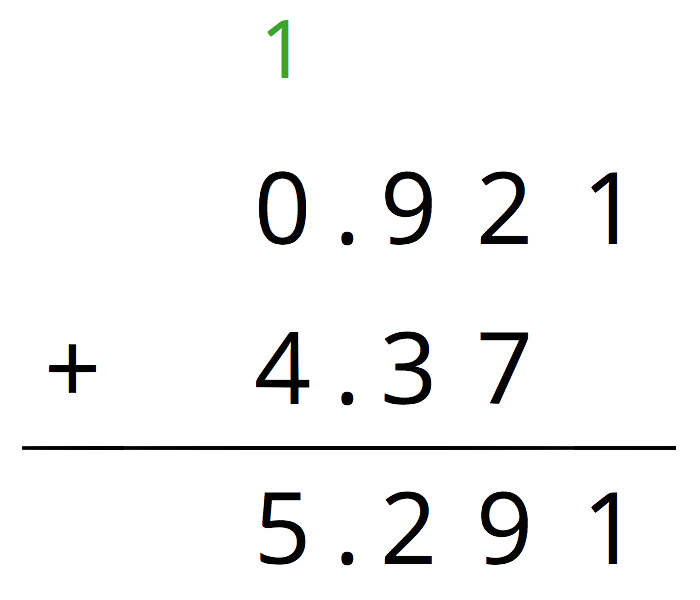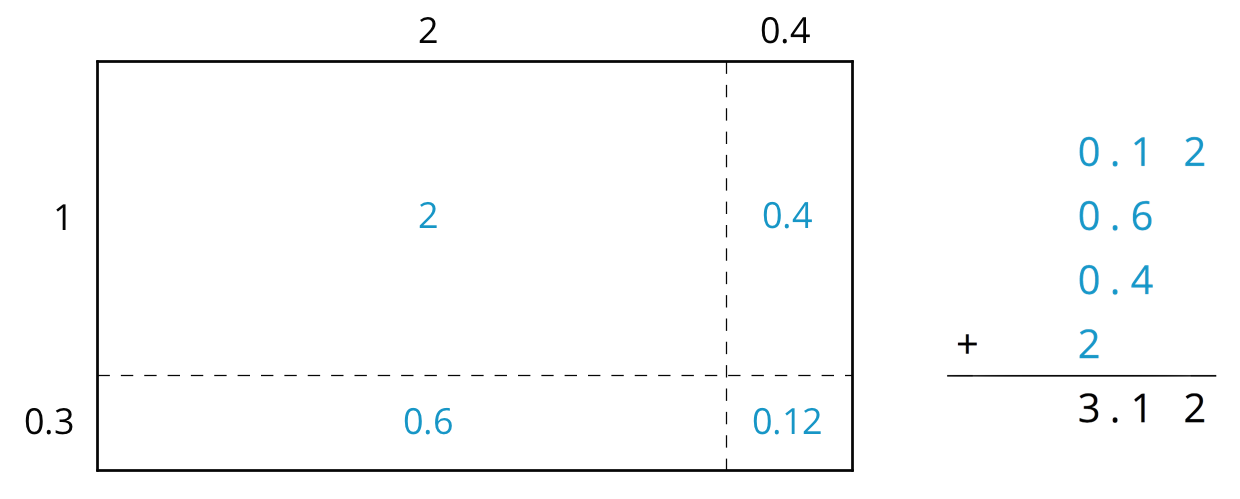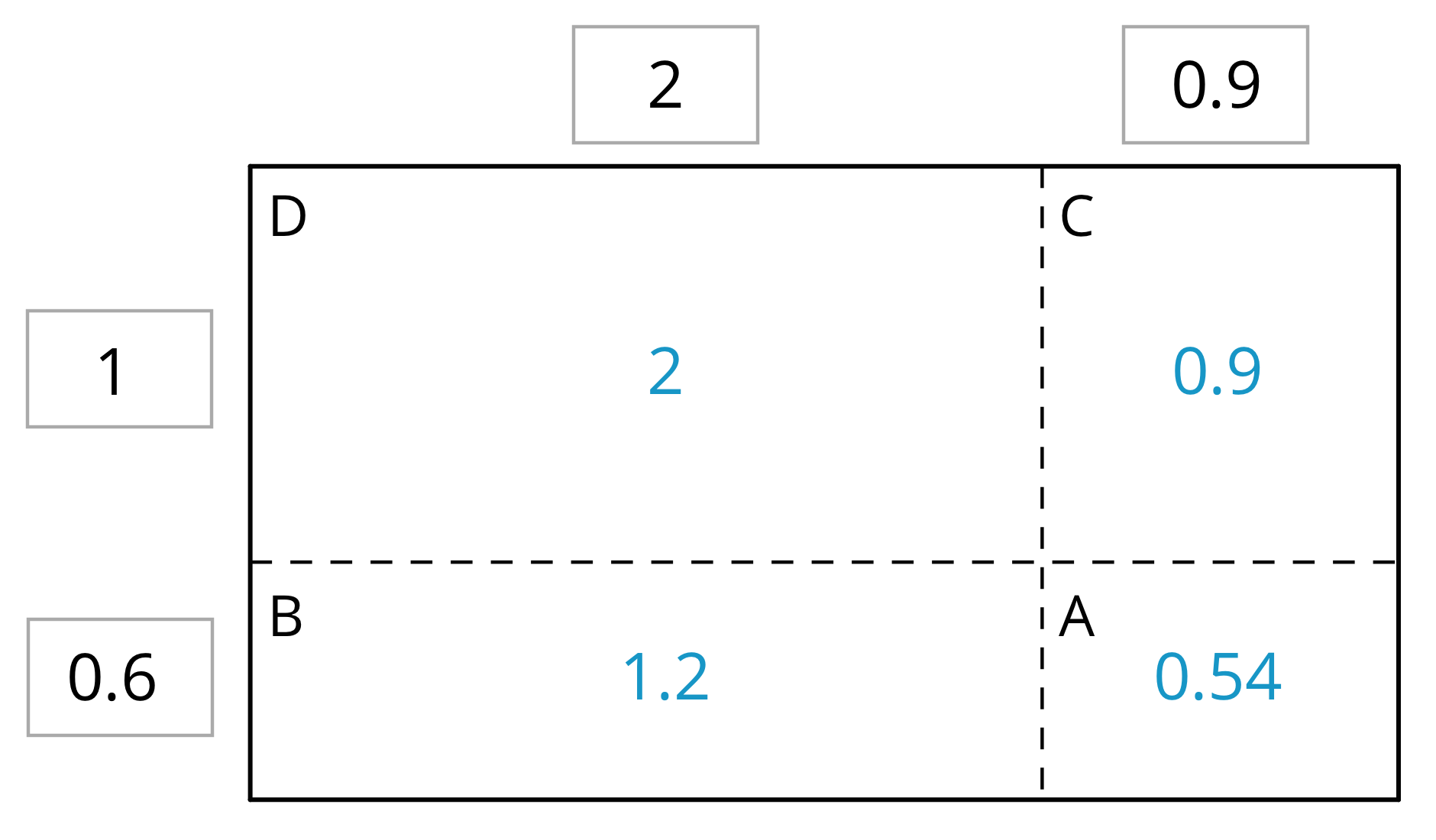Warming Up to Decimals
This week, your student will add and subtract numbers using what they know about the meaning of the digits. In earlier grades, your student learned that the 2 in 207.5 represents 2 hundreds, the 7 represents 7 ones, and the 5 represents 5 tenths. We add and subtract the digits that correspond to the same units like hundreds or tenths. For example, to find
Any time we add digits and the sum is greater than 10, we can “bundle” 10 of them into the next higher unit. For example,
To add whole numbers and decimal numbers, we can arrange

Here is a task to try with your student:
Find the value of
Solution: 7.308. Sample explanation: there are 8 thousandths from 0.768. Next, the 4 hundredths from 6.54 and 6 hundredths from 0.768 combined make 1 tenth. Together with the 5 tenths from 6.54 and the 7 tenths from 0.768 this is 13 tenths total or 1 and 3 tenths. In total, there are 7 ones, 3 tenths, no hundredths, and 8 thousandths.
Multiplying Decimals
This week, your student will multiply decimals. There are a few ways we can multiply two decimals such as

Here is a task to try with your student:
Find
Solution: 4.64. The area of the rectangle (or the sum of the partial products) is:

Dividing Decimals
This week, your student will divide whole numbers and decimals. We can think about division as breaking apart a number into equal-size groups.
For example, consider
- First give everyone 10 grams. Then 40 grams have been shared out, and 25 grams are left over. We can see this in the first example.
- If we give everyone 6 more grams, then 24 grams have been shared out, and 1 gram is left.
- If we give everyone 0.2 more grams, then 0.8 grams are shared out and 0.2 grams are left.
- If everyone gets 0.05 more grams next, then all of the gold has been shared equally.
Everyone gets

The calculation on the right shows different intermediate steps, but the quotient is the same. This approach is called the partial quotients method for dividing.
Here is a task to try with your student:
Here is how Jada found 
- In the calculation, what does the subtraction of 700 represent?
- Above the dividend 784, we see the numbers 100, 10, and 2. What do they represent?
- How can we check if 112 if the correct quotient for
784÷7 ?
Solution
- Subtraction of 7 groups of 100 from 784.
- 100, 10, and 2 are the amounts distributed into each group over 3 rounds of dividing.
- We can multiply
7⋅112 and see if it produces 784.
IM 6–8 Math was originally developed by Open Up Resources and authored by Illustrative Mathematics, and is copyright 2017-2019 by Open Up Resources. It is licensed under the Creative Commons Attribution 4.0 International License (CC BY 4.0). OUR's 6–8 Math Curriculum is available at https://openupresources.org/math-curriculum/.